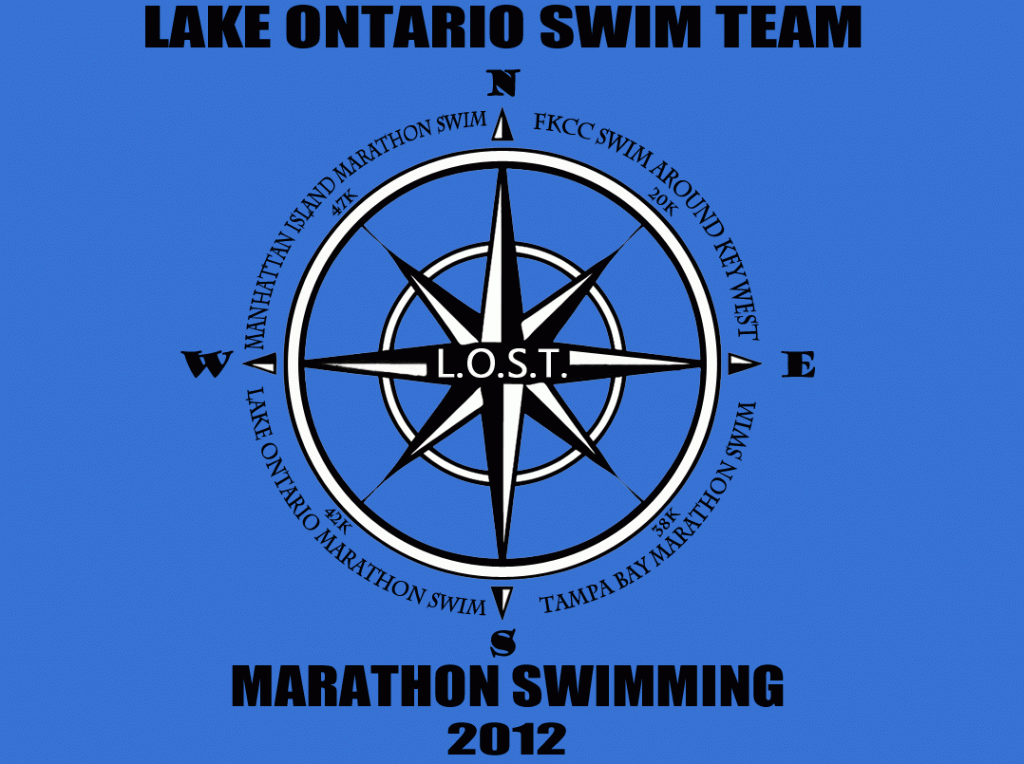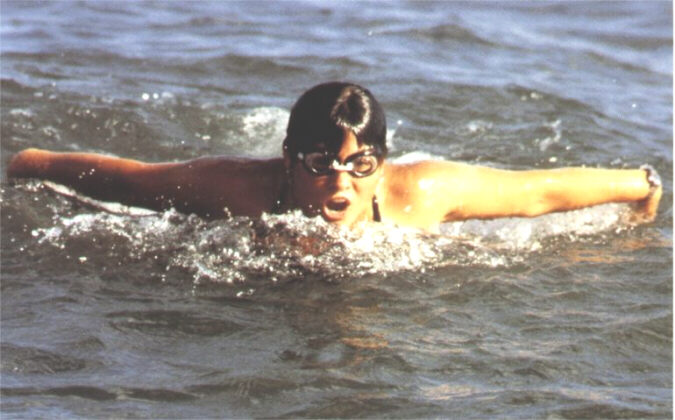The RECORD BOOK:
Lake Ontario Crossing Record Book (Sep 19, 2013)
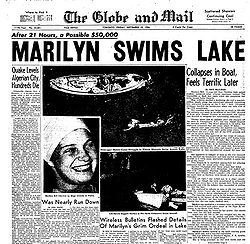
The ultimate challange for any LOST Swimmer, or for any marathon swimmer, is a Lake Ontario Crossing. Here is the list of swimmers that have accomplished that feat and some interesting facts about these swims…
Interesting Facts about Lake Ontario Crossings:
- Total Crossings: 66 (Sep 19, 2013)
- Number of People to Cross: 54
- Multiple Crossings: Jim Woods 2, Marilyn Korzekwa 2, John Munroe 2, John Scott 2, Kim Lumsdon 2, Colleen Sheilds 2, Kim Middleton 3,Vicki Keith 6
- Double Crossing: Vicki Keith (95 km)
- People who have swum the English Channel and Lake Ontario: 12, including: Marilyn Bell, Brenda Fisher, Vicki Keith, John Kinsella, Magdy Mandour, Kim Middleton, Cindy Nicholas, Loreen Passfield, Paolo Pinto, Claudio Plit, Marilyn Korzekwa, Madhu Nagaraja.
- Distance: varies given different starting and finishing points, 33 – 57km
- Distance of English Channel: 34 km
- How much longer it takes to swim Lake O than the EC, on average: 49%
- Average age: 31
- Earliest date: July 23
- Latest date: Sep 9
- Swims per month: July: 8, Aug: 50, Sep: 7
- Fastest crossing: 13:49, John Kinsella, 1976 (51 km)
- Slowest crossing: 41:01, Jay Serdula, 2008 (45 km).
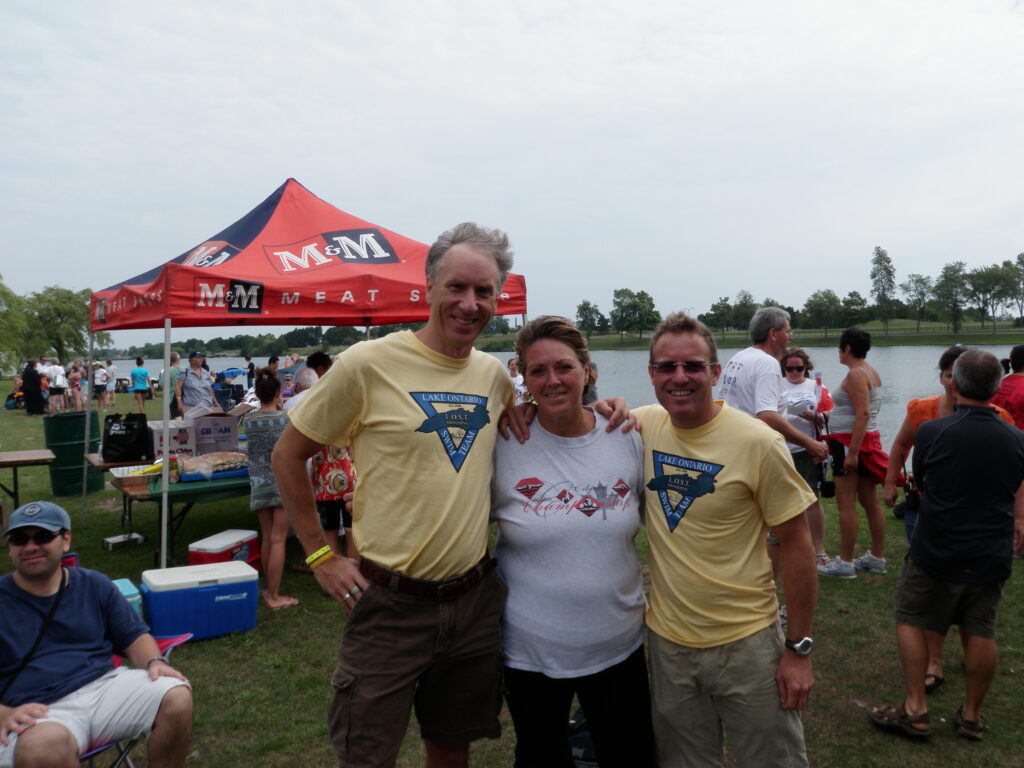
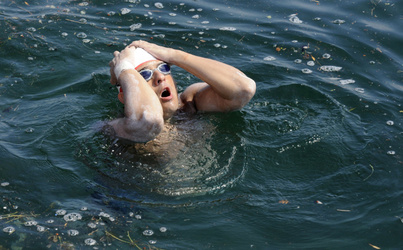

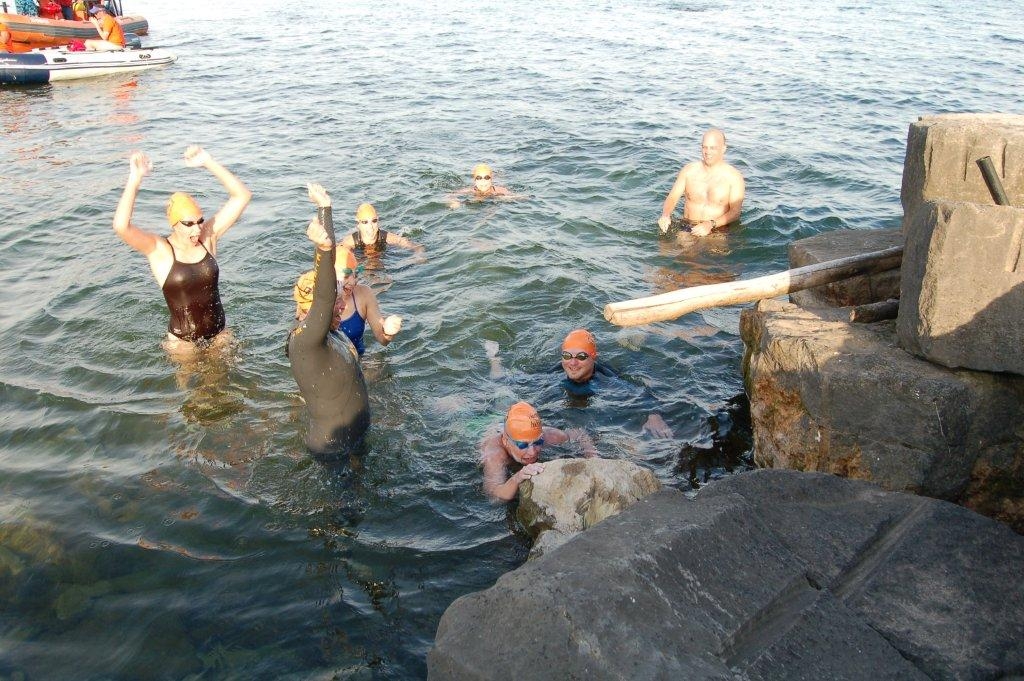
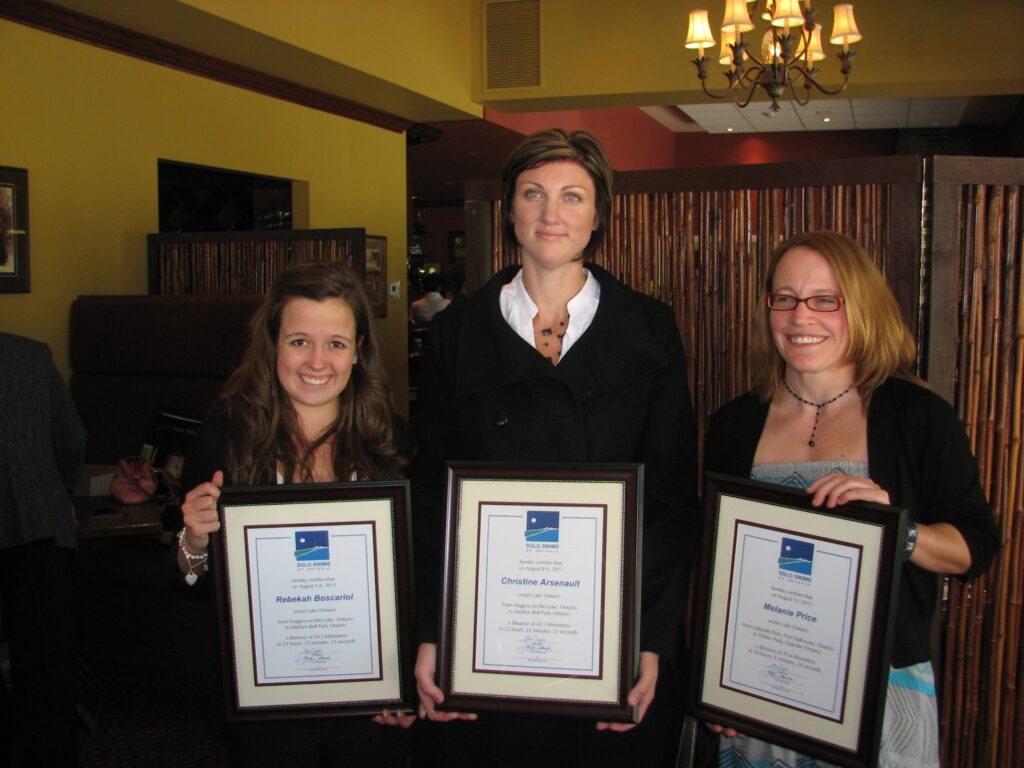

Rules of Marathon Swimming
Purpose
The Marathon Swimmers Federation (MSF) Rules of Marathon Swimming are a set of standards and guidelines for undertaking a solo, unassisted open-water marathon swim in any body of water.
MSF Rules may be used by any swimmer who wishes to attempt a swim for which there is no local governing body. They also may be used by local governing bodies wishing to adopt a global standard — or as a foundation upon which to establish local exceptions.
MSF Rules do not override local rules — they aim to codify their shared spirit.
The Spirit of Marathon Swimming
MSF Rules are guided by the traditions and spirit of unassisted marathon swimming.
Marathon swimmers embrace the challenge of crossing wild, open bodies of water with minimal assistance beyond their own innate physical strength and mental fortitude. There are ways to make the sport easier, but marathon swimmers consciously eschew them.
Marathon swimmers take pride that their achievements can be meaningfully compared to the achievements of previous generations, because the standard equipment of the sport has not changed significantly since 1875.
Definitions
Marathon Swim
A nonstop open-water swim, undertaken according to standardized rules, and requiring at least several hours of sustained effort to complete. Ten kilometers without significant assistance from currents is the minimum distance considered to be a marathon swim.
Nonstop
Remaining in the water for the entire duration of the swim from start to finish without intentional physical contact with escort vessels, support personnel, or other objects (fixed or floating).
Unassisted
Without artificial assistance to performance, other than the standard equipment of the sport. Any swim using nonstandard performance-enhancing equipment, or otherwise violating the rules of unassisted marathon swimming, is considered an Assisted Swim.
Standard Equipment of Marathon Swimming
-
One swimsuit made of porous, textile material. For males, the suit must not extend below the thigh or above the waist. For females it must not extend below the thigh, onto the neck, or beyond the shoulder.
-
One bathing cap made of latex or silicone.
-
Goggles, earplugs, and noseclips.
-
Sunscreen and grease.
-
Escort boat, pilot, and crew.
-
Nutrition, and equipment to transport it between the boat and swimmer. The swimmer may not be supported or towed by the feed equipment.
-
Paddlers and support swimmers.
The swimmer does not need to declare the use of standard equipment (i.e., it is assumed).
Any equipment not specifically listed here is considered nonstandard equipment. Use of nonstandard equipment must always be declared, even if the equipment’s benefit to performance is ambiguous.
Examples of nonstandard performance-enhancing equipment
Swims using nonstandard, performance-enhancing equipment cannot be considered unassisted. Examples include:
-
Equipment that may retain or increase warmth – e.g., wetsuits, neoprene caps, booties, gloves.
-
Equipment that may increase speed – e.g., flippers, paddles, shark cages.
-
Equipment that may increase buoyancy – e.g., pull buoys, wetsuits.
-
Auditory pacing aids – e.g., music players, metronomes.
-
Electronic devices attached to the swimmer, which transmit information to the swimmer – e.g., wristwatches, navigation aids, biofeedback monitors.
-
Underwater streamers.
-
Performance-enhancing drugs on the World Anti-Doping Agency List of Prohibited Substances.
Observers
The swim observer documents the facts of a swim and verifies the swim’s adherence to the declared rules. Documentation produced by a qualified observer is the single most important source material for authenticating a swim claim.
Qualifications
The primary qualifications of an observer are:
Independence
The observer must be capable of dispassionately evaluating the swim and its adherence to the declared rules. If the observer is acquainted with the swimmer, (s)he must be able to separate the personal relationship from his/her duties to observe, document, and verify.
Expertise
The observer must be knowledgeable about the rules, traditions, and spirit of marathon swimming, and with the responsibilities of observing a marathon swim.
The MSF maintains a global network of qualified, willing observers. Local observer networks and official trainings are offered by following organizations:
Observers who have not attended an official training may also demonstrate expertise through their personal history in the sport – as a swimmer, crew-member, or administrator.
Special Considerations
Very Long Swims
If a single observer is not able to maintain alertness for the entire duration of the swim, an additional observer is necessary. The MSF recommends two observers for swims anticipated to last longer than 18 hours, and three observers for swims anticipated to last longer than 30 hours. Overnight swims in the 10-18 hour range may also require a second observer.
On swims with multiple observers, a lead observer should be designated to coordinate the observer team and documentation procedures.
High-Profile or Unprecedented Swims
Swims of unusual magnitude or notoriety – especially unprecedented swims – demand a stricter standard for observer qualifications and reputation. In such cases, it is essential that the observers are trusted by the broader community of marathon swimmers.
The MSF recommends a minimum of two highly qualified, reputable observers for high-profile swims, to reinforce their credibility.
“Golden Rules” of Marathon Swimming
Transparency of Swim Conduct
The intended conduct of the swim – including Swim Rules and any nonstandard equipment to be used – must be communicated fully and clearly before the swim begins, to everyone involved in the swim attempt, and in all public promotion. The declared rules and equipment may not be changed once the swim has begun.
Independent Observation
Independent and knowledgeable observers must document the facts of the swim and verify the swimmer’s adherence to the Swim Rules.
Swim Rules
This section defines standard MSF Swim Rules for a one-way solo swim (Point A to Point B). Standard rules for multi-leg swims, circumnavigation swims, relay swims, and stage swims are defined in the MSF Rules Supplement.
Individual swimmers or local governing bodies may adopt MSF Swim Rules in full, as shorthand for “standard conduct.” Or, they may adapt the rules to local circumstances, as long as two conditions are met:
-
Any modifications of standard swim conduct are declared.
-
The modifications do not violate the spirit of unassisted marathon swimming.
The declared Swim Rules must be read aloud by the observer in the presence of the swimmer and all support personnel before the swim begins.
Start & Finish
The swim begins when the swimmer enters the water from a natural shore. If geographic obstacles (e.g., cliffs) prevent the swimmer from clearing the water at the start, the swimmer may begin the swim by touching and releasing from part of the natural shore (e.g., cliff face).
The swim finishes when the swimmer clears the water on a natural shore, beyond which there is no navigable water. If geographic obstacles prevent the swimmer from clearing the water at the finish, the swimmer may finish by touching part of the natural shore.
Physical Contact
The swimmer may not make intentional supportive contact with any vessel, object, or support personnel at any time during the swim.
Standard Equipment
The swimmer may wear a single textile swimsuit with standard coverage, one latex or silicone cap, goggles, ear plugs, nose clips, and may grease the body. The swimmer may not use any additional equipment that benefits speed, buoyancy, endurance, or heat retention.
Drafting
The swimmer may not intentionally draft behind any escort vessel or support swimmer. The swimmer may swim alongside an escort vessel, but may not intentionally position him or herself inside the vessel’s bow and displacement waves, except while feeding.
Support Swimmers
A support swimmer (or swimmers) may accompany the solo swimmer for a limited duration. Multiple support swims are allowed, but should not occur consecutively. The MSF recommends a maximum of one hour per support swim and a minimum of one hour between support swims.
The support swimmer may not intentionally touch the solo swimmer and must position him or herself at least slightly behind the solo swimmer.
Authority on the Escort Vessel
The observer is responsible for documenting the facts of the swim, interpreting the swim rules, and keeping the official time.
The pilot of the escort vessel (or lead pilot, if there are multiple vessels) is the ultimate authority in all other matters. (S)he may cancel the swim at any time, for any reason. The pilot is responsible for following all relevant local maritime regulations.
Responsible Environmental Stewardship
Everyone involved in the swim attempt – swimmer, observer, support personnel, and escort boat personnel – must treat the environment respectfully and prevent avoidable harm to marine wildlife and ecosystems.
Continuance of the Spirit of Marathon Swimming
If any issue regarding swim conduct arises that the Swim Rules do not clearly address, the swimmer should act – and the observer should judge – in accordance with thespirit of unassisted marathon swimming.
Using MSF Rules For Your Swim
The MSF Rules of Marathon Swimming are licensed through Creative Commons, and may be used or adapted by individual swimmers or local sanctioning bodies according to the following guidelines:
-
The Swim Rules section (and only that section) is subject to an Attribution 4.0 International license. You may create adaptations of the MSF Swim Rules, provided you attribute the Marathon Swimmers Federation as the source.
-
Every other section in this document is subject to an Attribution-NoDerivatives 4.0 International license. You may reproduce this content, but only in its original form and only with attribution of the Marathon Swimmers Federation as the source. No modifications are allowed.
End Notes
Linked Documents
-
Rules Supplement (including Special Swim Types)
-
Endorsements: Marathon swimmers and organizations who endorse MSF Rules
-
Press Release for launch of MSF Rules
About the Marathon Swimmers Federation
The Marathon Swimmers Federation (MSF) provides resources, guidelines, and social networking to the global community of marathon swimmers and aspiring marathon swimmers. The MSF was founded in 2012 by Evan Morrison and Donal Buckley, and is centered at the 830-member online Marathon Swimmers Forum.
About the Authors
-
Evan Morrison (San Francisco, Calif., USA). Co-Founder, MSF. Board of Directors, Santa Barbara Channel Swimming Assoc. Catalina Channel, Santa Barbara Channel, and Manhattan Island solo swimmer. Author, Farther, Colder, Rougher.
-
Andrew Malinak (Seattle, Wash., USA). Manhattan Island solo swimmer.
-
Donal Buckley (Co. Tipperary, Ireland). Co-Founder, MSF. English Channel and Manhattan Island solo swimmer. Author, LoneSwimmer.com.
-
Elaine Howley (Boston, Mass., USA). Co-Founder, Massachusetts Open Water Swimming Assoc. Triple Crown marathon swimmer. Co-world record holder, double Boston Light Swim. Associate Editor, U.S. Masters Swimming/SWIMMER magazine. Author. TalesOfTheBeerBaby.com.
We received valuable feedback from Cathy Delneo, David Barra, Forrest Nelson, Barbara Held, Ron Collins, Scott Zornig, Finbarr Hedderman, Zoe Sadler, Rob Bohane, Mauricio Prieto, Greg O’Connor, Rich Morrison, Gale Morrison, Anthony McCarley, Dave Van Mouwerik.
Contact
Last Updated: January 6, 2014
